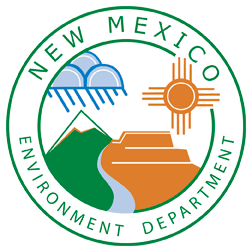The Strategic Water Supply Act (NMSA 72-12C-1 et seq.) establishes the Strategic Water Supply (SWS) Program as a way to protect New Mexico’s freshwater resources through the development and management of brackish water. The Act authorizes the New Mexico Department of Environment (NMED) and the Office of the State Engineer (OSE) to enter into contracts and award grants for projects that utilize treated brackish water. The Strategic Water Supply Fund has an initial appropriation of $40 million available to kick start the program.
Preparation:
To apply for a Strategic Water Supply Program contract please respond to the Brackish Water Treatment, Exploration and Production Request for Proposals (RFP) #26-667-2010-27781.
Eligible Entities:
Eligible entities are for-profit businesses, non-profit organizations, public entities and federally recognized Indian nations, tribes, or pueblos located wholly or partially in New Mexico. A public entity is defined in the Strategic Water Supply Act as a county, municipality, political subdivision, state agency, or state institution of higher education.
Eligible Projects:
Eligible projects include research and demonstration projects, feasibility studies, design pilots, environmental documentation projects, and construction projects. Collectively, projects funded by SWS Contracts will meet an array of needs to advance the exploration, production and treatment of brackish water in New Mexico. To this end, all projects must be approved by the State Engineer as meeting that objective.
Pursuant to the requirements of the Strategic Water Supply Act, a successful contract proposal shall:
- Comply with the Procurement Code, except that the contract duration may extend to twenty years in length, including extensions and renewals;
- Comply with all applicable state, federal, tribal and local governmental standards, permit requirements and other provisions of law, including public notice, public hearing processes and all other associated requirements related to public involvement, to protect existing water rights, conservation of water within the state, public welfare, public health and the environment;
- Include financial assurance, other than third party guarantees, to the Department of Environment in accordance with rules promulgated by the Water Quality Control Commission, running to the benefit of the state and with any forfeitures deposited in the State Treasury in the Strategic Water Supply Program Fund;
- Clearly demonstrate how the project will advance State, Tribal or local government economic development goals in accordance with the purposes of enhancing the State’s fresh water resources;
- Include a specific, actionable and measurable community benefits plan that includes a process for community engagement and is designed to provide broadly shared benefits to members of the public who are or may be impacted by the Strategic Water Supply Program Contract.
Details on Different Project Types
Research and Development

A research and development project involves developing innovative technologies and processes to improve brackish water treatment methods. It can include research to develop a device, equipment, process, or technology aimed at expanding the understanding of new brackish water treatment methods, infrastructure, and management. Research should focus on advancing innovative technologies or methodologies toward practical use. These projects should have a realistic potential to scale up to full implementation, thereby contributing to increased availability of freshwater resources within the state. While research and development/demonstration projects can address specific needs, their primary purpose is not to evaluate individual projects; instead, their outcomes should have broader applicability and impact.
Feasibility Study

A feasibility study assesses the viability of a potential brackish water project, evaluates alternative solutions to achieve the project objectives, and determines the most suitable/preferred option for further action or investment. Feasibility studies can address several key areas to determine project viability, including technical feasibility, economic/financial feasibility, operational feasibility, and legal/regulatory feasibility. Feasibility studies should aim to advance planning to a stage where design, construction, or implementation of a brackish water treatment facility or project can commence. Additionally, environmental documentation or specialized studies needed for permit approval could be included as part of the feasibility study, or as a stand-alone environmental documentation project (See below).
Design Pilot

A planning and design project involves creating a small-scale prototype of a full-scale brackish water treatment project or its components. Its purpose is to refine design criteria, assist in site selection, evaluate specific technologies or methodologies—whether standard or innovative—for implementing a full-scale brackish water treatment facility or project, and demonstrate the prototype system can achieve the treatment objectives. Key elements or components of a design pilot can include constructing or fabricating facilities and treatment approaches, testing equipment and components in various configurations, and analyzing and reporting collected data.
Environmental Documentation / Demonstration

An environmental documentation project is a stand-alone project to demonstrate compliance with state or federal regulations, such as the New Mexico Water Quality Act, the National Environmental Policy Act (NEPA), or other state or federal documentation required for fulfilling permit application requirements. Activities can include funding environmental impact assessments and testing and evaluation needed to meet permitting requirements. A basic feasibility study should already have been completed and there should be a reasonable expectation of project initiation.
Construction

A construction project includes the planning, design, development, or expansion of a full-scale brackish water treatment facility along with related infrastructure. Projects can include new construction, expansion of existing facilities, or replacements of major components that have reached the end of their useful life (e.g. operations and maintenance). Funding for design work may be included in the project budget; however, design alone will not be funded as a stand-alone construction project. Construction projects should have a completed feasibility study or facility plan, and the permitting and design should either be ready to proceed or already underway.
Review
All contract applications will be reviewed by a committee, comprised of experts from state agencies.

